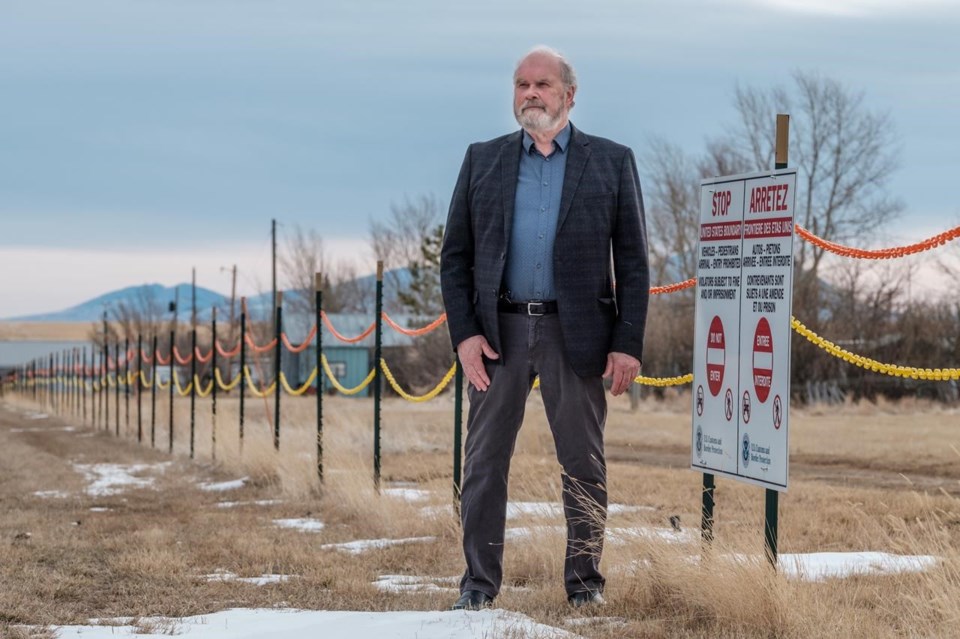COUTTS, Alta. — The mayor of a village in southern Alberta says the sun rose above the longest row of vehicles the border community had ever seen Monday a few hours after the Canada-United States border restrictions were eased.
The port of entry between Coutts, Alta., and Sweet Grass, Mont., is one of the busiest on the border.
But Mayor Jim Willett said the line of vehicles clogging roads over the weekend was "unreal."
"Talking to people who've lived here all their lives, they've never seen a lineup this long before," Willett said.
Lines of RVs began to stream into the Alberta community, with a population of around 250, on Friday as travellers prepared to drive into the U.S. for the first time since the onset of the COVID-19 pandemic.
Willett said he figures the community’s population had more than tripled by Sunday afternoon.
"Literally, there were RVs up and down both sides of the streets. You could hardly get through streets," he said.
It led to a tense day as community members worried what would happen if there was a medical emergency and an ambulance couldn't get through. Luckily, Willett said, there's only been one minor fender bender.
Shortly after 10 p.m. Sunday night — which was midnight ET — Customs and Border Protection agents began letting fully vaccinated vacationers, visitors and day-trippers drive across the border.
All night, vehicles slowly trickled across the border.
Willett figures the line of vehicles peaked at six-kilometres long, and had dropped to about four kilometres by Monday afternoon.
He said most people were waiting at least four hours to cross.
"Now you have all the commercial truckers trying to get through and they are on the clock,” he added.
There is no indication how long the surge of excited travellers will continue to make their way through Coutts but the mayor said he expects it will last for at least the week.
The world’s longest undefended border was first shut down on March 21, 2020, as the COVID-19 pandemic tightened its grip. It was the first such closure since Confederation in 1867.
While restrictions have loosened, Canada still requires anyone entering or re-entering the country to show proof of a negative PCR test, along with their vaccination cards. The U.S. waived that rule for people crossing by land.
The pandemic has brought people in the small Alberta community closer together, but Willett said the border traffic signals a return to normal since the lives of many people in the area straddle the two countries.
"It's been interesting" Willett said with a laugh.
This report by The Canadian Press was first published Nov. 8, 2021.
— By Kelly Geraldine Malone in Winnipeg.
The Canadian Press



